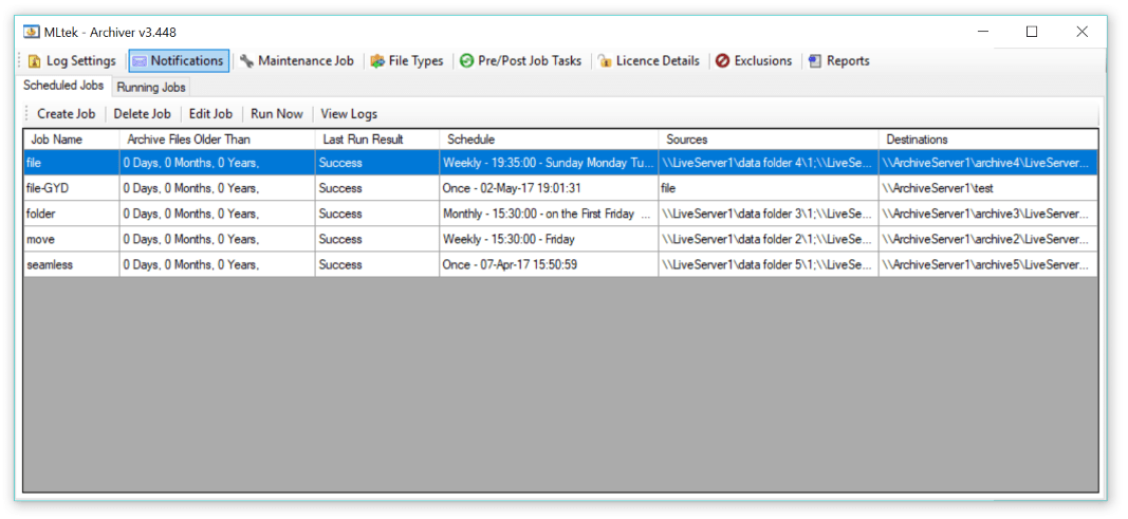In an era where data is king, the methods and tools for managing, storing, and archiving this data have become crucial. ArchiverFS is a product that stands out in this domain, offering a unique approach to data archiving that addresses the needs of modern businesses. This article delves into the intricacies of ArchiverFS, exploring how it revolutionizes data archiving and why it is a game-changer for organizations looking to streamline their data management processes.
Understanding Data Archiving
Data archiving is the process of moving data that is no longer actively used to a separate storage device for long-term retention. Archived data consists of older data that remains important to the organization or must be retained for future reference or regulatory compliance. Unlike backup solutions, which are primarily concerned with data recovery, archiving focuses on data retention and access over extended periods.
Traditional data archiving methods often involve significant hardware investments and complex software solutions. These systems can be expensive to maintain and may not scale well with the exponential growth of data. This is where ArchiverFS comes into play, offering a solution that is both cost-effective and highly scalable.
What is ArchiverFS
ArchiverFS is a software solution designed to simplify the data archiving process. It is developed by MLtek, a company known for creating innovative IT management solutions. ArchiverFS provides a straightforward, efficient, and cost-effective method for archiving old files and unstructured data.
Unlike traditional archiving systems that rely on proprietary storage formats and complex infrastructures, ArchiverFS uses NTFS (New Technology File System) as its storage medium. This approach allows organizations to leverage their existing storage infrastructure without the need for additional investments in specialized hardware or software.
Key Features of ArchiverFS
Transparent Archiving
One of the standout features of ArchiverFS is its ability to perform transparent archiving. This means that archived files remain accessible to users in the same way as they were before being archived. There is no need for users to learn new software or change their workflows, which significantly reduces the learning curve and potential disruptions to business operations.
Scalability
ArchiverFS is designed to handle large volumes of data, making it suitable for organizations of all sizes. Whether a company needs to archive a few terabytes or several petabytes of data, ArchiverFS can scale to meet these requirements. The use of NTFS as the storage medium ensures that the system can grow with the organization’s needs without encountering the limitations often associated with proprietary systems.
Cost-Effectiveness
By utilizing existing storage infrastructure and avoiding proprietary storage formats, ArchiverFS offers a cost-effective solution for data archiving. Organizations can repurpose their existing hardware for archiving purposes, thereby reducing the need for additional capital expenditures. Furthermore, ArchiverFS does not require expensive software licenses or maintenance contracts, further lowering the total cost of ownership.
Compliance and Retention Policies
ArchiverFS allows organizations to define and enforce data retention policies easily. This feature is particularly important for industries subject to strict regulatory requirements regarding data retention and compliance. By automating the enforcement of these policies, ArchiverFS helps organizations avoid potential legal issues and fines associated with non-compliance.
Integration and Compatibility
ArchiverFS is designed to integrate seamlessly with existing IT environments. It supports integration with various storage solutions, including network-attached storage (NAS), storage area networks (SAN), and cloud storage providers. This flexibility ensures that organizations can implement ArchiverFS without needing to overhaul their existing infrastructure.
How ArchiverFS Works
ArchiverFS operates by moving old and unused files from primary storage locations to secondary storage. The process begins with the configuration of archiving policies based on file age, type, or other criteria defined by the organization. Once these policies are in place, ArchiverFS scans the primary storage locations and identifies files that meet the archiving criteria.
The identified files are then moved to the secondary storage location specified by the organization. This secondary storage can be any NTFS-compliant storage device, including NAS, SAN, or cloud storage. Importantly, ArchiverFS preserves the directory structure and file permissions during the move, ensuring that archived files remain accessible in their original context.
To maintain transparency, ArchiverFS creates stubs or shortcuts in the original storage location that point to the archived files. These stubs allow users to access the archived files as if they were still located in the primary storage. When a user attempts to open an archived file, the stub redirects the request to the secondary storage, where the file is retrieved and made available.
Benefits of Using ArchiverFS
Improved Storage Efficiency
By moving old and unused files to secondary storage, ArchiverFS helps organizations free up valuable primary storage space. This improved storage efficiency can lead to better performance of primary storage systems and reduce the need for costly storage expansions.
Enhanced Data Management
ArchiverFS provides organizations with greater control over their data. By implementing archiving policies, organizations can ensure that only relevant and actively used data remains in primary storage. This streamlined data management approach makes it easier to locate and manage files, improving overall productivity.
Reduced Costs
The cost savings associated with ArchiverFS are significant. By leveraging existing storage infrastructure and avoiding the need for proprietary systems, organizations can reduce both capital and operational expenses. Additionally, the improved storage efficiency can delay or eliminate the need for costly storage upgrades.
Compliance and Risk Mitigation
For organizations subject to regulatory requirements, ArchiverFS provides a reliable method for enforcing data retention policies. By automating the archiving process and ensuring that files are retained according to predefined policies, organizations can mitigate the risk of non-compliance and associated fines.
Seamless User Experience
The transparent archiving feature of ArchiverFS ensures that users can continue to access archived files without changing their workflows. This seamless user experience minimizes disruptions and reduces the need for training, making it easier for organizations to implement and maintain the archiving solution.
Real-World Applications
ArchiverFS is used by a wide range of organizations across various industries. Here are a few examples of how different sectors benefit from using ArchiverFS:
Healthcare
Healthcare organizations generate vast amounts of data, including patient records, medical images, and administrative documents. ArchiverFS helps these organizations manage their data more effectively by archiving old records and freeing up primary storage for active patient data. This ensures that healthcare providers can access critical information quickly while maintaining compliance with data retention regulations.
Financial Services
In the financial services industry, data retention and compliance are of utmost importance. ArchiverFS allows financial institutions to enforce data retention policies and archive old transaction records, emails, and other documents. By doing so, these institutions can reduce storage costs, improve data management, and ensure compliance with regulatory requirements.
Education
Educational institutions also generate large volumes of data, including student records, research data, and administrative files. ArchiverFS helps these institutions manage their data more efficiently by archiving old records and freeing up primary storage for active data. This improved storage efficiency allows educational institutions to better serve their students and faculty.
Legal
Law firms and legal departments deal with a substantial amount of documentation, including case files, contracts, and correspondence. ArchiverFS assists legal professionals in managing their data by archiving old case files and documents, ensuring that active cases and current documents are easily accessible. This streamlined data management approach enhances productivity and reduces the risk of non-compliance with legal retention requirements.
Conclusion
ArchiverFS is revolutionizing the data archiving landscape by offering a cost-effective, scalable, and user-friendly solution for managing unstructured data. Its transparent archiving, seamless integration, and compliance features make it an ideal choice for organizations across various industries. By improving storage efficiency, enhancing data management, and reducing costs, ArchiverFS empowers organizations to handle their data more effectively and focus on their core business activities. As the volume of data continues to grow, solutions like ArchiverFS will play a crucial role in helping organizations manage their data efficiently and remain competitive in the digital age.













+ There are no comments
Add yours